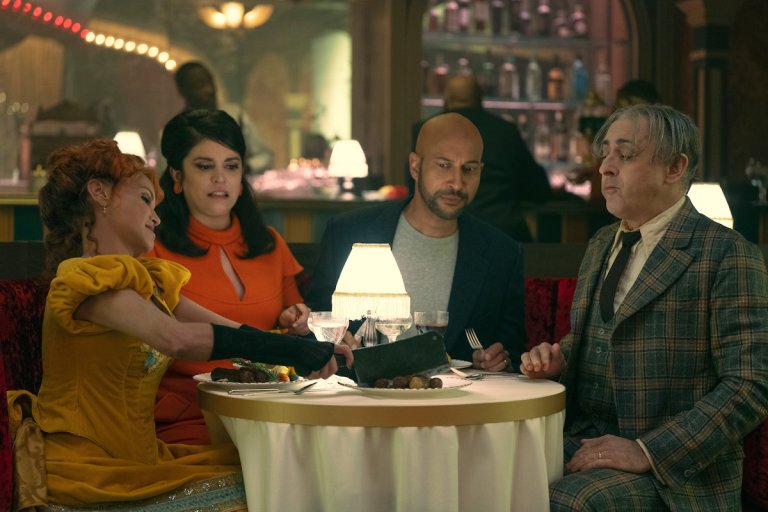If You Ever Wondered What Advice Your Mom Would Give You, You Can Find It Here

The first draft of my new book—my first for children—was written in 2001, as a gift for my daughter, who was then eight and a half years old. I wrote it for her after we read Little Women together and she noted (or complained) that Marmee, the mother in the story, gave her daughters each a copy of a “guide to life.”
“Why haven’t you written a guide to life for me?” my daughter wanted to know. When I laughed and explained that the “guide to life” in Little Women was a religious tract, John Bunyan’s Pilgrim’s Progress, Grace—that’s my daughter—wasn’t having any of it. She folded her arms and said, “Yes, well, that’s because Marmee isn’t a writer. So she couldn’t write her own. But you could.”
And so I did.
But until the Guide to Life I wrote for her surfaced again during a search of her bookshelves (she herself having decamped to college nearly two years before) for the first volume of Maud Hart Lovelace’s Betsy-Tacy series to read with a seven-year-old friend, I had forgotten that I had ever written it (I was in a fugue state, I think, for much of her childhood). But there it was, neatly shelved alongside volumes of poetry and collections of plays—a homemade, crudely hand-stitched “book” (its author, who knows how to do a number of things, does not, unfortunately, know how to sew—but not knowing how to do something has never stopped her—that is, me—from trying to do it). I sat down on the floor of Grace’s room then and there and read it through—grateful and pleased and touched that she had kept it, and grateful and pleased and touched to learn subsequently, over emails and texts, that it had (and how and why it had) been helpful to her and her friends when they were children.
And so now I have published it, with the hope that it will be useful to other eight- and nine- and ten-year-olds (and perhaps girls a little young or a little older, too).
A Girl’s Guide to Life offers what I consider fundamental advice. There are some “rules” for being “good” (and some of them, I point out, are pretty obvious, and the reader probably has heard them all her life—such as “don’t take anything that doesn’t belong to you”—and some of them may be things she’s never thought about before). Here’s some more from the “rules” portion of the book.
- Never be cruel on purpose to anyone, even if it’s someone you don’t like. If you’ve been cruel accidentally, apologize.
- When you apologize it, mean it. Think it through. Saying “I’m sorry” doesn’t fix things; it only makes them look fixed. Stop and try out the golden rule in the privacy of your own mind. Ask yourself how it feels to be the other person right now. Let yourself feel and understand what it is you are apologizing for. Then say you’re sorry.
- Be grateful for other people’s acts of generosity and kindness. Let them know you’re grateful. Never assume they’ll know without your telling them. Write notes of thanks; call them up.
- Always treat other people with respect. This means: take them seriously, be polite, and do your best to defer to them in matters that are their own areas of expertise (if someone who is an expert ice skater tells you something about ice skating, don’t say, “No, that’s not the way I do it!” Even if you feel that way, keep it to yourself and at least consider the advice she’s giving you. You might find that it’s very helpful, even if you were annoyed when she said it). If someone voices an opinion you don’t agree with—or says something that’s different from what you’ve been told—it’s okay to disagree, but do it respectfully. Don’t be mean (never say, “That’s a stupid idea,” or “You’re wrong!” or “I can’t believe you think that!”) or laugh at someone else’s ideas or opinions. Just tell them what your ideas are. “That’s interesting,” you might say. “I never thought of it that way. Here’s what I think….” or, “Really? You know, there are a lot of different ideas about that” and talk about what you think.” Ask questions—real questions, not the kind that are insults disguised as questions. (Instead of “asking” someone, “Do you really think that boring/terrible song [or TV show or book or movie or game] is actually good?”, try asking her what she likes about it, or how it makes her feel.) Always remember that everyone deserves respect.
And that includes you. Not only should you expect to be treated with respect by others—so that if someone were to say to you, “Are you kidding me? You like that dumb song? What are you, a baby?”, you might respond by saying, “I do like that song. Here’s why….” (and perhaps the “why” is: because it makes me feel good…or because the melody is so pretty…or because I like to dance to it…or because it reminds me of this happy day I was having the first time I heard it, or anything else that’s true)—but you also should always be respectful of yourself. Answering a mean question in the way I’ve suggested is one way of respecting yourself.
In fact I talk a lot in this book about the importance of respecting oneself and taking oneself seriously.
People often are subject to self-doubt and uncertainty, even “self-hate” (I’m no good at that; I know I can’t do it; nobody could possibly really like me; I’m stupid; I look foolish doing that; I’m weird; I don’t fit in—and so on.) If you let yourself be stopped by this kind of thinking, you will miss out on MANY things that might be wonderful. If you are sure someone you’re interested in being friends with won’t like you—so you don’t put yourself forward and talk to her or him—then there’s a chance you’ll never get to know that person (who might simply be shy). If you’re shy yourself, this may seem very difficult, so it may help to know that most people feel shy at least some of the time. Even people who seem very confident have moments (or hours or days) of self-doubt, and no one is confident in all situations. Everyone would like to feel confident all the time—and nobody enjoys being scared—but if you can face your own anxiety (which is another way of saying “the feeling of being scared and nervous”), reminding yourself that it’ll be worth it if you can make yourself speak up—or introduce yourself to someone new, or raise your hand to volunteer to do something, or audition for a play, or try some new activity you’re curious about but afraid you’ll be bad at—there is a very good chance that something good is just ahead. The truth is, the scared part doesn’t last very long. You just have to get to the other side of it. (Think of it like jumping over a big puddle. And sure—it’s always possible that you’ll land just short of the other side, and get your feet wet. But then one more little jump and you’re on dry land.
But I also point out that one shouldn’t try just anything—that nobody should ever “try” something she knows or intuits is dangerous or bad for her (and that this is where having adults around who have experienced more of the world than children have, and who have a good idea what is unhealthy or dangerous, is handy—and that it’s a good idea to take our word for it when we tell you something is going to do you harm).
Still, nobody can protect you from every possible danger. It’s good to keep your eyes open and be aware of the possible dangers in the world around you. There will be times when only you can make the decision that will keep you safe—when you simply have to say NO, even when there’s no adult around to say it for you, or advise you to say it.
Sticking to your guns—knowing what you want and don’t want, and what’s good for you—is one of the most important things you can do for yourself. This doesn’t mean you will always feel sure about things, but it does mean that you can say NO and give yourself time to think about—or talk to an adult about—the question that was raised. The main thing to remember here is this:
Never let anyone push you into doing anything—no matter how sure they are that it’s a good idea!
You are your own person, which means that you “own” yourself, and even when other people try to convince you that they know what’s best for you—or that they know better than you do about something—you don’t have to go along with it. Sometimes it’s appropriate to explain yourself, and sometimes you don’t have to. Sometimes it’s enough just to say no.
And this is advice you’re never too old to benefit from. ![]()




